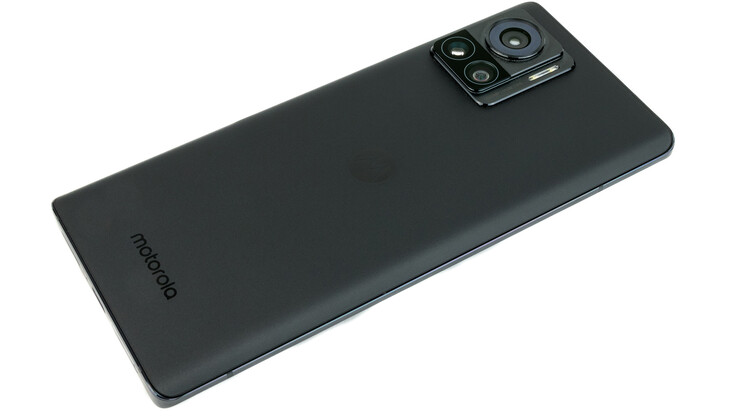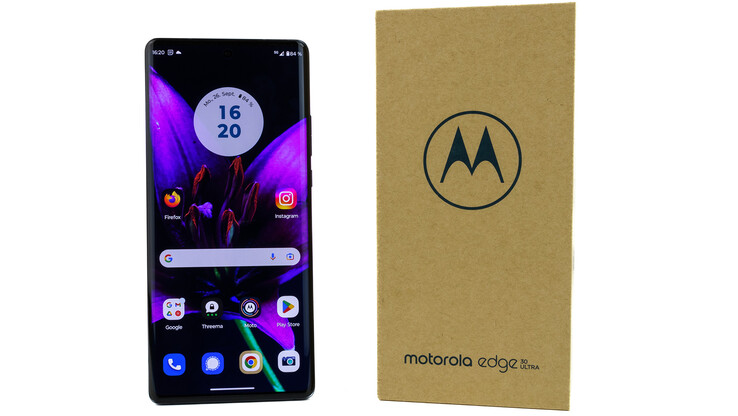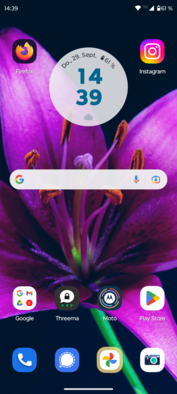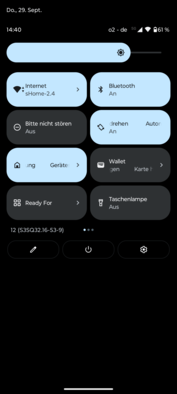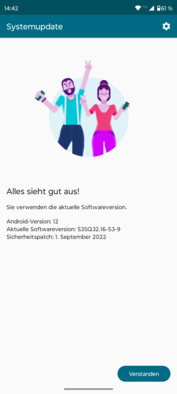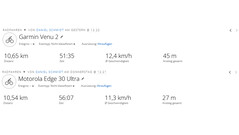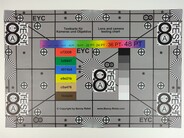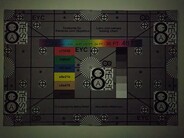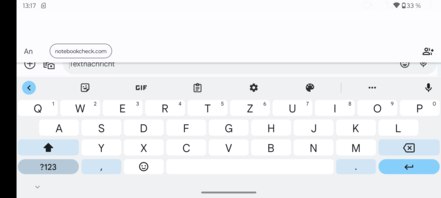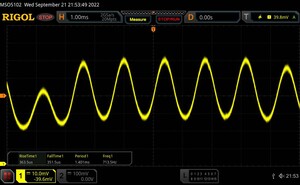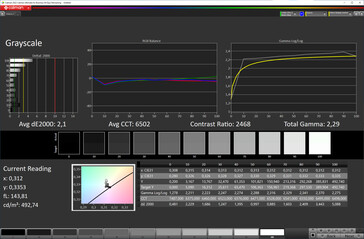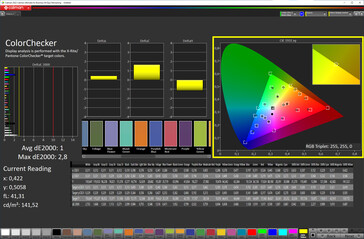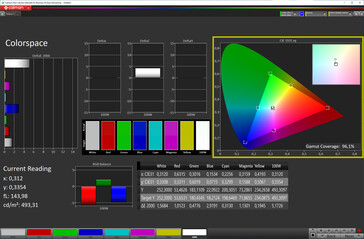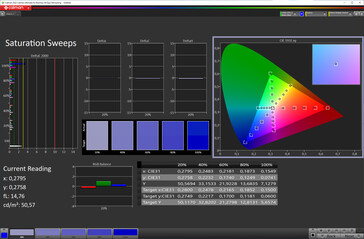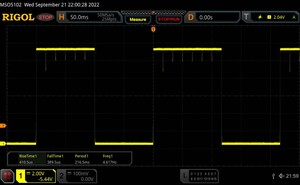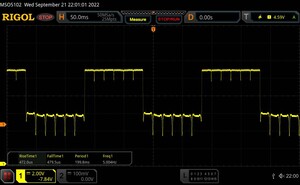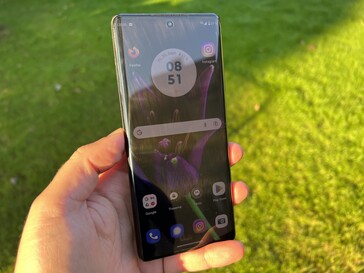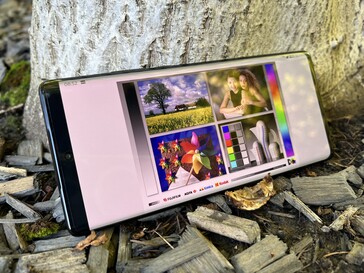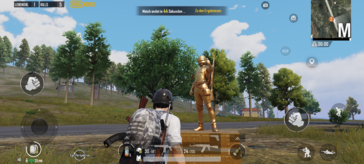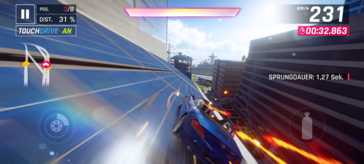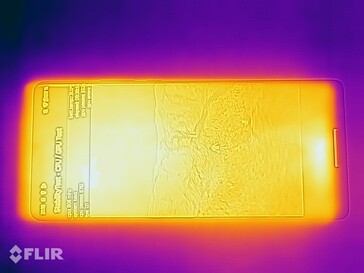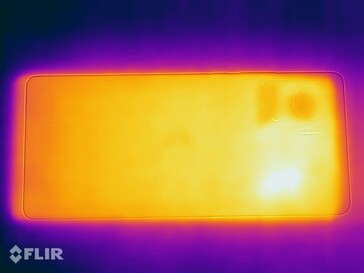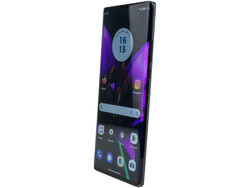Motorola Edge 30 Ultra review: The first smartphone with a 200 MP camera
Motorola has not released a high-end smartphone in a long time. Then again, the former industry giant had a strong budget flagship in its lineup last year, in the form of the Edge 20 Pro, which was succeeded by the Edge 30 Pro this year.
With its Ultra model, Motorola is going a step further, elevating this series into the high-end category through the use of a better display and more powerful cameras. Above all, the focus is on the new 200 MPix sensor of the main camera.
For around US$ 900, the smartphone is still considerably cheaper than most of its competitors. Whether there are flaws or this is simply a case of a strong price-performance ratio is revealed in the following review.
Possible Competitors in Comparison
Rating | Date | Model | Weight | Drive | Size | Resolution | Best Price |
|---|---|---|---|---|---|---|---|
| 89.3 % | 10/2022 | Motorola Edge 30 Ultra SD 8+ Gen 1, Adreno 730 | 198.5 g | 256 GB UFS 3.1 Flash | 6.67" | 2400x1080 | |
| 89.4 % | 03/2022 | Samsung Galaxy S22 Ultra 5G Exynos 2200, Xclipse 920 | 228 g | 128 GB UFS 3.1 Flash | 6.80" | 3088x1440 | |
| 88.8 % | 09/2022 | Xiaomi 12S Ultra SD 8+ Gen 1, Adreno 730 | 225 g | 256 GB UFS 3.1 Flash | 6.73" | 3200x1440 | |
| 87.7 % | 08/2022 | Sony Xperia 1 IV SD 8 Gen 1, Adreno 730 | 185 g | 256 GB UFS 3.1 Flash | 6.50" | 3840x1644 | |
| 88.6 % | 07/2022 | Honor Magic4 Pro SD 8 Gen 1, Adreno 730 | 215 g | 256 GB UFS 3.1 Flash | 6.81" | 2848x1312 | |
| 88.5 % | 09/2022 | Vivo X80 Pro SD 8 Gen 1, Adreno 730 | 215 g | 256 GB UFS 3.1 Flash | 6.78" | 3200x1440 |
Case - Slim giant with matte glass on the back
With a 6.67-inch display, the Motorola Edge 30 Ultra does not count among the smallest smartphone representatives, but is nevertheless very thin. This impression is further reinforced by its rounded longitudinal edges, and the smartphone feels comfortable in the hands. Moreover, the weight amounts to just under 200 grams. Even the Vivo X80 Pro weighs 16 grams more, and even the iPhone 14 Pro Max is a whopping 41 grams heavier.
The workmanship is impressive. Corning Gorilla Glass 5 is installed for protection on the front side, while an unspecified kind of matte glass is used on the backside, which proves to be completely fingerprint proof. The slim aluminum edges give the impression of stability, and the gaps between the glass and aluminum are tight and flush. The Edge 30 Ultra defies torsional stress with ease.
The SIM slot at the bottom connects almost seamlessly with the frame and sits a fraction more deeply. The Motorola smartphone is IP52 certified, meaning that it is protected against the ingress of harmful amounts of dust and splashes of water. But it is neither dust- nor waterproof. The Edge 30 Ultra is available in the color variants Interstellar Black and Starlight White.
Equipment - USB 3.2 in the Motorola Edge 30 Ultra
The Motorola Edge 30 Ultra possesses a USB 3.2 port (Gen. 1), which allows for high data rates of up to 5 GBit/s as well as wired image transfer. Thanks to OTG, external storage media and peripheral devices can be connected to the smartphone, or it can serve as a PowerBank for other devices.
A microSD slot is not available, nor is an audio jack, a radio receiver or an IR blaster. In Germany, only a storage configuration with 12 GB RAM and 256 GB internal storage is available, which is rounded off with Bluetooth 5.2 and NFC.
Software - Edge 30 Ultra with Android 12 and three updates
The Motorola Edge 30 Ultra comes with Android 12 and My UX. The user interface does not feature any major design changes, but it does offer a few software enhancements, such as the two-finger tapping motion to activate the flashlight, quick screenshots with three fingers, or the Gametools app.
Motorola promises three large Android updates and four years of security patches for the Edge 30 Ultra. At the time of review, the security patch installed on our smartphone was from September 1, 2022, and thus up to date.
Communication and GNSS - 5G Sub6 and fast WLAN in the Moto smartphone
Thanks to broad frequency support, the Motorola Edge 30 Ultra accesses mobile internet very easily and masters all current standards, with the exception of 5G mmWave.
The smartphone also performs flawlessly in WLAN and even supports Wi-Fi 6E. Data transfer rates via our Asus ROG Rapture GE-ATX11000 reference router are high and mostly stable. The fluctuations in the 6 Ghz network will hardly be noticeable in everyday use.
| Networking | |
| Motorola Edge 30 Ultra | |
| iperf3 receive AXE11000 |
|
| iperf3 transmit AXE11000 |
|
| iperf3 transmit AXE11000 6GHz |
|
| iperf3 receive AXE11000 6GHz |
|
| Samsung Galaxy S22 Ultra 5G | |
| iperf3 receive AXE11000 |
|
| iperf3 transmit AXE11000 |
|
| iperf3 transmit AXE11000 6GHz |
|
| iperf3 receive AXE11000 6GHz |
|
| Xiaomi 12S Ultra | |
| iperf3 receive AXE11000 |
|
| iperf3 transmit AXE11000 |
|
| Sony Xperia 1 IV | |
| iperf3 receive AXE11000 |
|
| iperf3 transmit AXE11000 |
|
| iperf3 transmit AXE11000 6GHz |
|
| iperf3 receive AXE11000 6GHz |
|
| Honor Magic4 Pro | |
| iperf3 receive AXE11000 |
|
| iperf3 transmit AXE11000 |
|
| Vivo X80 Pro | |
| iperf3 receive AXE11000 |
|
| iperf3 transmit AXE11000 |
|
| Average of class Smartphone | |
| iperf3 receive AXE11000 |
|
| iperf3 transmit AXE11000 |
|
| iperf3 transmit AXE11000 6GHz |
|
| iperf3 receive AXE11000 6GHz |
|
For localization, the Motorola Edge 30 Ultra uses all current satellite networks with up to three frequency bands. Positioning indoors also functions very quickly and precisely.
On a small bike ride, we compared the smartphone's tracking capabilities with those of the Garmin Venu 2. The recorded total distance deviates around 90 meters and the detailed route is convincing.
Telephony and Voice Quality
The Motorola Edge 30 Ultra has three microphones at its disposal and, when held to the ear in quite environments, delivers crystal clear voice quality. Background chatter is reliably filtered out, but small distortions can occasionally occur in the speaker's voice. These distortions become worse in the presence of loud background noise, and the actual cause is not audible. Loudspeaker mode functions very well as long as the distance to the smartphone is not so large. At around two meters from the smartphone, the speaker can only be heard very quietly.
The Edge 30 Ultra supports VoLTE and WLAN calls. Up to two Nano SIM cards can be inserted, but eSIM support is lacking.
Cameras - Full-fledged triple camera with 200 MPix
The Motorola Edge 30 Ultra comes out fighting with large numbers of megapixels, with all cameras together amounting to a total of 322 MPix. The front-facing camera alone accounts for 60 MPix. Selfies taken with this camera are reduced to 15.1 MPix, but require over 7 MB of storage space. Even in low light, the quality is impressive and the preset beauty mode works very discreetly. Videos can be recorded in Ultra HD at 30 FPS.
The focus is on the 200 MPix sensor of the main camera of Samsung's Edge 30 Ultra, which combines 16 individual pixels into a super pixel with a size of 2.56 µm. Image files with a size of 12.6 MPix are then output. If you want to take photos in full size, you have to do without most of the image enhancement algorithms and be patient for around 2.5 seconds until the picture has been processed. The result then takes up around 32 MB of memory. The Moto smartphone also has a Pro mode that allows RAW photos, but these are again limited to 12.6 MPix (approx. 26 MB).
Photo quality is acceptable, even if the images are slightly blurry towards the edges. The white balance is also a little cool. Details are finely reproduced without going overboard with the sharpening. However, a little more dynamic would have been desirable.
All the more pleasing is that the two additional lenses are not just decorative accessories. The ultra-wide-angle lens also serves as a macro lens and provides a good depth of field thanks to its high resolution. Pixel binning is also used here, so only 12.6 MPix remains from the original 50 MPix. The third lens is a double optical magnifier, which is unfortunately no longer mandatory in this price range, but does without its own OIS. Up to 16x magnification is provided for the digital zoom.
In terms of video, the Motorola smartphone has a lot to offer and records in 8k at 30 FPS at best, but 60 FPS is also available for those who are content with Ultra HD. The aspect ratio can be 16:9 or full screen, which is an unusual video format at 20:9. Those wanting to record videos in HDR10+ will be limited to 4k/30 FPS. Slow motion is possible in Full HD at up to 960 FPS. The given quality is good, but we would have liked more flexibility when filming. 24 FPS should be possible at least, not to mention PAL formats or 21:9.
Image Comparison
Choose a scene and navigate within the first image. One click changes the position on touchscreens. One click on the zoomed-in image opens the original in a new window. The first image shows the scaled photograph of the test device.
Main cameraMain cameraUltra wide angle5x zoomLow lightWe examined the main camera of Motorola's Edge 30 Ultra under controlled lighting conditions. The test chart is characterized by a very high level of detail in the center of the image. Even the smallest fonts remain legible, although small aberrations creep in here and there. Sharpness decreases towards the edges, but not to an excessive degree.
The white balance is very good here, but a few colors, dark brown and dark green, show high deviations from the target.
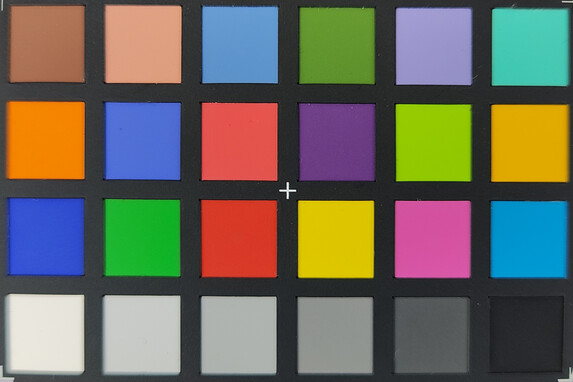
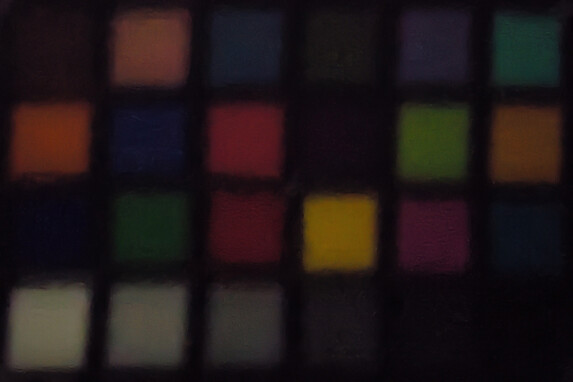
Accessories & Warranty - Warranty period is extendable
The large packaging of Motorola's Edge 30 Ultra hints that it contains somewhat more than just a smartphone. A 125-watt charger, a USB-C cable, a SIM tool, a transparent silicone protective case, a multilingual quick start guide and another booklet with warranty conditions and safety instructions are included. A positive aspect is that no plastic is used for the packaging.
In Germany, the warranty amounts to 24 months. This can be extended by one year (+60 Euros) and the smartphone can optionally be insured against accidents for up to two years (up to 135 Euros). This covers both a broken display and water damage, and a maximum of two claims can be submitted without additional costs.
For international readers: Warranty terms and insurance options may differ from country to country, so be sure to check with your supplier before buying.
Input Devices & Operation - Optical fingerprint in Edge 30 Ultra
The capacitive touchscreen comes with a screen protector, which has been neatly applied but does not cover the entire front glass. Gliding quality is good, but not as convincing as on the glass surface. Nevertheless, the touchscreen responds very quickly and precisely to input, which is certainly due to the quite high sampling rate of 360 Hz.
Biometric security is provided by an optical fingerprint scanner in the display, which very reliably recognizes the stored fingerprints and unlocks quickly. Alternatively or additionally, facial recognition via the front-facing camera can be used, but is less secure.
The Edge 30 Ultra offers a variety of gestures and a one-hand mode, which works just like the iPhone.
Display - Bright OLED with up to 144 Hz
The large 6.67-inch (16.94 cm) POLED display of Motorola's Edge 30 Ultra works with Full HD+ and a refresh rate of up to 144 Hz. However, the latter is only active when it is enabled permanently in the settings. If automatic mode is selected, the system varies the refresh rate between 60, 90 and 120 Hz.
The brightness of the panel is very good with a pure white display of over 1,000 cd/m². With an even distribution of bright and dark areas (APL18), the center of the screen achieves a value of up to 1,322 cd/m². This also ensures a vibrant display of HDR content. In this regard, the Edge 30 Ultra supports the HLG, HDR10 and HDR10+ standards. Up to 501 cd/m² is available in manual control.
The smartphone's POLED shows the typical flickering. At minimum brightness, this fluctuates quite unsteadily between 180 and 720 Hz. Sensitive users can use the DC dimming mode, which works with a stable 90 Hz at low panel brightness. Above 69% of the display brightness, only a frequency equal to the refresh rate can be measured. No temporal dithering was detected. For this, we examined the display with a microscope and a 240 FPS slow motion video (dark gray, at full brightness).
| |||||||||||||||||||||||||
Brightness Distribution: 96 %
Center on Battery: 1020 cd/m²
Contrast: ∞:1 (Black: 0 cd/m²)
ΔE Color 1 | 0.5-29.43 Ø5
ΔE Greyscale 2.1 | 0.57-98 Ø5.3
96.1% sRGB (Calman 2D)
Gamma: 2.29
| Motorola Edge 30 Ultra pOLED, 2400x1080, 6.67 | Samsung Galaxy S22 Ultra 5G Dynamic AMOLED, 3088x1440, 6.80 | Xiaomi 12S Ultra OLED, 3200x1440, 6.73 | Sony Xperia 1 IV OLED, 3840x1644, 6.50 | Honor Magic4 Pro OLED, 2848x1312, 6.81 | Vivo X80 Pro AMOLED, 3200x1440, 6.78 | |
|---|---|---|---|---|---|---|
| Screen | 10% | -7% | 6% | -50% | 11% | |
| Brightness middle | 1020 | 1077 6% | 831 -19% | 890 -13% | 956 -6% | 938 -8% |
| Brightness | 1020 | 1093 7% | 807 -21% | 897 -12% | 959 -6% | 947 -7% |
| Brightness Distribution | 96 | 97 1% | 91 -5% | 97 1% | 94 -2% | 97 1% |
| Black Level * | ||||||
| Colorchecker dE 2000 * | 1 | 1.2 -20% | 1.03 -3% | 0.9 10% | 2.4 -140% | 0.9 10% |
| Colorchecker dE 2000 max. * | 2.8 | 2 29% | 3.06 -9% | 2.4 14% | 5.2 -86% | 1.9 32% |
| Greyscale dE 2000 * | 2.1 | 1.3 38% | 1.8 14% | 1.4 33% | 3.3 -57% | 1.3 38% |
| Gamma | 2.29 96% | 2.37 93% | 2.233 99% | 2.21 100% | 2.26 97% | 2.2 100% |
| CCT | 6502 100% | 6526 100% | 6396 102% | 6320 103% | 6804 96% | 6518 100% |
* ... smaller is better
Screen Flickering / PWM (Pulse-Width Modulation)
| Screen flickering / PWM detected | 720 Hz | ||
The display backlight flickers at 720 Hz (worst case, e.g., utilizing PWM) . The frequency of 720 Hz is quite high, so most users sensitive to PWM should not notice any flickering. In comparison: 53 % of all tested devices do not use PWM to dim the display. If PWM was detected, an average of 17900 (minimum: 5 - maximum: 3846000) Hz was measured. | |||
Series of measurements at a fixed zoom level and different brightness settings
The most natural color representation is achieved on the display of the Motorola Edge 30 Ultra when the Natural color profile is selected. This is characterized by soft saturation and accurate colors. Only the white balance is not optimal and shows a subtle greenish tint, which is not annoying in everyday use.
Display Response Times
| ↔ Response Time Black to White | ||
|---|---|---|
| 0.8 ms ... rise ↗ and fall ↘ combined | ↗ 0.4105 ms rise | |
| ↘ 0.3895 ms fall | ||
| The screen shows very fast response rates in our tests and should be very well suited for fast-paced gaming. In comparison, all tested devices range from 0.1 (minimum) to 240 (maximum) ms. » 1 % of all devices are better. This means that the measured response time is better than the average of all tested devices (21.5 ms). | ||
| ↔ Response Time 50% Grey to 80% Grey | ||
| 0.95 ms ... rise ↗ and fall ↘ combined | ↗ 0.472 ms rise | |
| ↘ 0.4795 ms fall | ||
| The screen shows very fast response rates in our tests and should be very well suited for fast-paced gaming. In comparison, all tested devices range from 0.2 (minimum) to 636 (maximum) ms. » 1 % of all devices are better. This means that the measured response time is better than the average of all tested devices (33.7 ms). | ||
Performance - Powerful Snapdragon 8+ Gen 1 in the Moto smartphone
The Motorola Edge 30 Ultra is powered by Qualcomm Snapdragon 8+ Gen 1, which is supported by 12 GB of LPDDR5 RAM. The SoC is on the expected level in the benchmarks.
In the AnTuTu, the Moto smartphone achieves a seven-digit score and takes the lead in the comparison field. It also lands in top position in PCMark and Basemark OS II and is beaten only by the Xiaomi 12S Ultra in CrossMark in terms of system performance.
However, the AI benchmarks are surprisingly weak; we expected better results in AImark and Procyon.
| UL Procyon AI Inference for Android - Overall Score NNAPI | |
| Xiaomi 12S Ultra | |
| Sony Xperia 1 IV | |
| Honor Magic4 Pro | |
| Vivo X80 Pro | |
| Average Qualcomm Snapdragon 8+ Gen 1 (3291 - 84787, n=19) | |
| Average of class Smartphone (207 - 84787, n=150, last 2 years) | |
| Motorola Edge 30 Ultra | |
| Samsung Galaxy S22 Ultra 5G | |
The Adreno 730 of the Edge 30 Ultra impresses with very high performance and is on par with the Xiaomi 12S Ultra in the benchmarks. But later on, Motorola overtakes the Xiaomi in the onscreen tests, since the latter with its QHD-Plus resolution has more pixels to process.
GFXBench (DX / GLBenchmark) 2.7: T-Rex Onscreen | 1920x1080 T-Rex Offscreen
GFXBench 3.0: on screen Manhattan Onscreen OGL | 1920x1080 1080p Manhattan Offscreen
GFXBench 3.1: on screen Manhattan ES 3.1 Onscreen | 1920x1080 Manhattan ES 3.1 Offscreen
GFXBench: on screen Car Chase Onscreen | 1920x1080 Car Chase Offscreen | on screen Aztec Ruins High Tier Onscreen | 2560x1440 Aztec Ruins High Tier Offscreen | on screen Aztec Ruins Normal Tier Onscreen | 1920x1080 Aztec Ruins Normal Tier Offscreen | 3840x2160 4K Aztec Ruins High Tier Offscreen
| 3DMark / Wild Life Extreme Unlimited | |
| Xiaomi 12S Ultra | |
| Motorola Edge 30 Ultra | |
| Honor Magic4 Pro | |
| Vivo X80 Pro | |
| Sony Xperia 1 IV | |
| Samsung Galaxy S22 Ultra 5G | |
| 3DMark / Wild Life Extreme | |
| Xiaomi 12S Ultra | |
| Motorola Edge 30 Ultra | |
| Honor Magic4 Pro | |
| Vivo X80 Pro | |
| Sony Xperia 1 IV | |
| Samsung Galaxy S22 Ultra 5G | |
| 3DMark / Wild Life Unlimited Score | |
| Xiaomi 12S Ultra | |
| Motorola Edge 30 Ultra | |
| Honor Magic4 Pro | |
| Vivo X80 Pro | |
| Sony Xperia 1 IV | |
| Samsung Galaxy S22 Ultra 5G | |
| GFXBench (DX / GLBenchmark) 2.7 / T-Rex Onscreen | |
| Motorola Edge 30 Ultra | |
| Honor Magic4 Pro | |
| Xiaomi 12S Ultra | |
| Samsung Galaxy S22 Ultra 5G | |
| Sony Xperia 1 IV | |
| Vivo X80 Pro | |
| GFXBench (DX / GLBenchmark) 2.7 / T-Rex Offscreen | |
| Motorola Edge 30 Ultra | |
| Xiaomi 12S Ultra | |
| Honor Magic4 Pro | |
| Sony Xperia 1 IV | |
| Samsung Galaxy S22 Ultra 5G | |
| Vivo X80 Pro | |
| GFXBench 3.0 / Manhattan Onscreen OGL | |
| Motorola Edge 30 Ultra | |
| Honor Magic4 Pro | |
| Samsung Galaxy S22 Ultra 5G | |
| Xiaomi 12S Ultra | |
| Sony Xperia 1 IV | |
| Vivo X80 Pro | |
| GFXBench 3.0 / 1080p Manhattan Offscreen | |
| Xiaomi 12S Ultra | |
| Motorola Edge 30 Ultra | |
| Samsung Galaxy S22 Ultra 5G | |
| Honor Magic4 Pro | |
| Sony Xperia 1 IV | |
| Vivo X80 Pro | |
| GFXBench 3.1 / Manhattan ES 3.1 Onscreen | |
| Motorola Edge 30 Ultra | |
| Honor Magic4 Pro | |
| Xiaomi 12S Ultra | |
| Samsung Galaxy S22 Ultra 5G | |
| Sony Xperia 1 IV | |
| Vivo X80 Pro | |
| GFXBench 3.1 / Manhattan ES 3.1 Offscreen | |
| Xiaomi 12S Ultra | |
| Motorola Edge 30 Ultra | |
| Honor Magic4 Pro | |
| Samsung Galaxy S22 Ultra 5G | |
| Sony Xperia 1 IV | |
| Vivo X80 Pro | |
| GFXBench / Car Chase Onscreen | |
| Motorola Edge 30 Ultra | |
| Xiaomi 12S Ultra | |
| Honor Magic4 Pro | |
| Vivo X80 Pro | |
| Sony Xperia 1 IV | |
| Samsung Galaxy S22 Ultra 5G | |
| GFXBench / Car Chase Offscreen | |
| Motorola Edge 30 Ultra | |
| Xiaomi 12S Ultra | |
| Honor Magic4 Pro | |
| Samsung Galaxy S22 Ultra 5G | |
| Sony Xperia 1 IV | |
| Vivo X80 Pro | |
| GFXBench / Aztec Ruins High Tier Onscreen | |
| Motorola Edge 30 Ultra | |
| Xiaomi 12S Ultra | |
| Vivo X80 Pro | |
| Sony Xperia 1 IV | |
| Honor Magic4 Pro | |
| Samsung Galaxy S22 Ultra 5G | |
| GFXBench / Aztec Ruins High Tier Offscreen | |
| Motorola Edge 30 Ultra | |
| Honor Magic4 Pro | |
| Xiaomi 12S Ultra | |
| Vivo X80 Pro | |
| Samsung Galaxy S22 Ultra 5G | |
| Sony Xperia 1 IV | |
| GFXBench / Aztec Ruins Normal Tier Onscreen | |
| Motorola Edge 30 Ultra | |
| Xiaomi 12S Ultra | |
| Honor Magic4 Pro | |
| Vivo X80 Pro | |
| Sony Xperia 1 IV | |
| Samsung Galaxy S22 Ultra 5G | |
| GFXBench / Aztec Ruins Normal Tier Offscreen | |
| Motorola Edge 30 Ultra | |
| Xiaomi 12S Ultra | |
| Honor Magic4 Pro | |
| Vivo X80 Pro | |
| Sony Xperia 1 IV | |
| Samsung Galaxy S22 Ultra 5G | |
| GFXBench / 4K Aztec Ruins High Tier Offscreen | |
| Motorola Edge 30 Ultra | |
| Honor Magic4 Pro | |
| Xiaomi 12S Ultra | |
| Vivo X80 Pro | |
| Sony Xperia 1 IV | |
Basemark GPUScore
In the browser benchmarks, Motorola's Edge 30 Ultra falls in the middle of the comparison field. These are not outstanding results, but this is not noticeable in everyday use, and the smartphone convinces with smooth browsing speed.
| Jetstream 2 - Total Score | |
| Sony Xperia 1 IV (Chrome 103) | |
| Average Qualcomm Snapdragon 8+ Gen 1 (76.2 - 178.5, n=21) | |
| Motorola Edge 30 Ultra (Chrome 105) | |
| Xiaomi 12S Ultra (Chrome 104) | |
| Average of class Smartphone (13.8 - 351, n=173, last 2 years) | |
| Samsung Galaxy S22 Ultra 5G (Chrome 99) | |
| Honor Magic4 Pro (Chrome 102) | |
| Vivo X80 Pro | |
| Speedometer 2.0 - Result | |
| Sony Xperia 1 IV (Chrome 103) | |
| Average Qualcomm Snapdragon 8+ Gen 1 (69.1 - 167, n=16) | |
| Samsung Galaxy S22 Ultra 5G (Chrome 99) | |
| Average of class Smartphone (14.9 - 445, n=157, last 2 years) | |
| Motorola Edge 30 Ultra (Chrome 105) | |
| Vivo X80 Pro (Chrome 103) | |
| Xiaomi 12S Ultra (Chrome 104) | |
| Honor Magic4 Pro (Chrome 102) | |
| WebXPRT 4 - Overall | |
| Sony Xperia 1 IV (Chrome 103) | |
| Average Qualcomm Snapdragon 8+ Gen 1 (69 - 159, n=19) | |
| Xiaomi 12S Ultra (Chrome 104) | |
| Motorola Edge 30 Ultra (Chrome 105) | |
| Average of class Smartphone (22 - 202, n=160, last 2 years) | |
| Honor Magic4 Pro (Chrome 102) | |
| WebXPRT 3 - Overall | |
| Sony Xperia 1 IV (Chrome 103) | |
| Average Qualcomm Snapdragon 8+ Gen 1 (106 - 224, n=14) | |
| Motorola Edge 30 Ultra (Chrome 105) | |
| Xiaomi 12S Ultra (Chrome 104) | |
| Average of class Smartphone (39 - 304, n=122, last 2 years) | |
| Samsung Galaxy S22 Ultra 5G (Chrome 99) | |
| Honor Magic4 Pro (Chrome 102) | |
| Vivo X80 Pro (Chrome 103) | |
| Octane V2 - Total Score | |
| Sony Xperia 1 IV (Chrome 103) | |
| Vivo X80 Pro (Chrome 103) | |
| Average Qualcomm Snapdragon 8+ Gen 1 (17622 - 55611, n=22) | |
| Motorola Edge 30 Ultra (Chrome 105) | |
| Xiaomi 12S Ultra (Chrome 104) | |
| Samsung Galaxy S22 Ultra 5G (Chrome 99) | |
| Average of class Smartphone (4633 - 89112, n=213, last 2 years) | |
| Honor Magic4 Pro (Chrome 102) | |
| Mozilla Kraken 1.1 - Total | |
| Average of class Smartphone (388 - 9999, n=173, last 2 years) | |
| Honor Magic4 Pro (Chrome 102) | |
| Samsung Galaxy S22 Ultra 5G (Chrome 99) | |
| Vivo X80 Pro (Chrome 103) | |
| Motorola Edge 30 Ultra (Chrome 105) | |
| Xiaomi 12S Ultra (Chrome 104) | |
| Average Qualcomm Snapdragon 8+ Gen 1 (729 - 1707, n=20) | |
| Sony Xperia 1 IV (Chrome 103) | |
* ... smaller is better
The UFS 3.1 memory in the Edge 30 Ultra delivers very high transfer rates, especially when reading and writing small blocks of data. Some competitors are faster in sequential reading, but these differences are unnoticeable in everyday use.
| Motorola Edge 30 Ultra | Samsung Galaxy S22 Ultra 5G | Xiaomi 12S Ultra | Sony Xperia 1 IV | Honor Magic4 Pro | Vivo X80 Pro | Average 256 GB UFS 3.1 Flash | Average of class Smartphone | |
|---|---|---|---|---|---|---|---|---|
| AndroBench 3-5 | -18% | 5% | -8% | -8% | -4% | -16% | -25% | |
| Sequential Read 256KB | 1717.77 | 1653 -4% | 1963.45 14% | 1982.56 15% | 1868.5 9% | 1856.39 8% | 1760 ? 2% | 1508 ? -12% |
| Sequential Write 256KB | 1363.58 | 1074 -21% | 1475.43 8% | 1262.21 -7% | 1367.48 0% | 1424.91 4% | 1134 ? -17% | 1118 ? -18% |
| Random Read 4KB | 349.08 | 322.3 -8% | 309.21 -11% | 293.95 -16% | 268.76 -23% | 303.72 -13% | 281 ? -20% | 247 ? -29% |
| Random Write 4KB | 446.25 | 273.1 -39% | 489.58 10% | 334.19 -25% | 366.13 -18% | 382.17 -14% | 311 ? -30% | 272 ? -39% |
Gaming - High details and frame rates possible
The Adreno 730 is one of the most powerful graphics units in the Android segment. Demanding games therefore pose no problem for Motorola's Edge 30 Ultra.
Frame rates of selected titles were checked using the GameBench tool. As expected, the Ultra HD setting can be used for PUBG Mobile and also runs very stably at 40 FPS. This even reaches 60 FPS in HD, but further reduction in the level of detail does not result in any frame rate gains. The racing game Asphalt 9 can also be rendered smoothly at the highest detail level.
Emissions - Decent dual speakers in the Moto Edge 30 Ultra
Temperature
The surface temperatures of Motorola's Edge 30 Ultra are always very low and the 32-degree mark is only exceeded in some places, even under sustained load.
However, the smartphone's cooling system is unable to get the SoC's temperature development under control, since this drops after just four runs of the 3DMark Wild Life stress test and the smartphone loses up to 40 percent of its output power in the course of the test. But it's still slightly faster than the Zenfone 9, which uses the same chipset.
(+) The maximum temperature on the upper side is 32.3 °C / 90 F, compared to the average of 35 °C / 95 F, ranging from 21.9 to 56 °C for the class Smartphone.
(+) The bottom heats up to a maximum of 31.9 °C / 89 F, compared to the average of 33.8 °C / 93 F
(+) In idle usage, the average temperature for the upper side is 26.5 °C / 80 F, compared to the device average of 32.7 °C / 91 F.
3DMark Wild Life Stress Test
| 3DMark | |
| Wild Life Stress Test Stability | |
| Vivo X80 Pro | |
| Honor Magic4 Pro | |
| Sony Xperia 1 IV | |
| Motorola Edge 30 Ultra | |
| Samsung Galaxy S22 Ultra 5G | |
| Xiaomi 12S Ultra | |
| Wild Life Extreme Stress Test | |
| Xiaomi 12S Ultra | |
| Vivo X80 Pro | |
| Motorola Edge 30 Ultra | |
| Honor Magic4 Pro | |
| Sony Xperia 1 IV | |
| Samsung Galaxy S22 Ultra 5G | |
Speakers
The two speakers of Motorola's Edge 30 Ultra support Dolby Atmos, but we would not describe the sound quality as rich. Nevertheless, the speakers do their job quite well at medium volumes and provide pleasant sound, but lack depth and dynamic, especially at higher volumes.
USB-C is available for wired headphones, which may require an optional adapter. Broad audio codec support (SBC, AAC, aptX, aptX HD, aptX Adaptive, aptX TWS+, LDAC, LHDC V1-4) is offered wirelessly via Bluetooth.
Motorola Edge 30 Ultra audio analysis
(+) | speakers can play relatively loud (90.3 dB)
Bass 100 - 315 Hz
(-) | nearly no bass - on average 23.3% lower than median
(±) | linearity of bass is average (7.1% delta to prev. frequency)
Mids 400 - 2000 Hz
(±) | reduced mids - on average 5.3% lower than median
(+) | mids are linear (4.4% delta to prev. frequency)
Highs 2 - 16 kHz
(+) | balanced highs - only 4.8% away from median
(+) | highs are linear (3.7% delta to prev. frequency)
Overall 100 - 16.000 Hz
(±) | linearity of overall sound is average (16.4% difference to median)
Compared to same class
» 4% of all tested devices in this class were better, 4% similar, 92% worse
» The best had a delta of 12%, average was 38%, worst was 134%
Compared to all devices tested
» 22% of all tested devices were better, 5% similar, 72% worse
» The best had a delta of 4%, average was 25%, worst was 134%
Samsung Galaxy S22 Ultra 5G audio analysis
(+) | speakers can play relatively loud (90.2 dB)
Bass 100 - 315 Hz
(-) | nearly no bass - on average 24.4% lower than median
(±) | linearity of bass is average (8.8% delta to prev. frequency)
Mids 400 - 2000 Hz
(±) | higher mids - on average 6.3% higher than median
(+) | mids are linear (4.8% delta to prev. frequency)
Highs 2 - 16 kHz
(±) | higher highs - on average 5.6% higher than median
(+) | highs are linear (4.1% delta to prev. frequency)
Overall 100 - 16.000 Hz
(±) | linearity of overall sound is average (18.5% difference to median)
Compared to same class
» 14% of all tested devices in this class were better, 9% similar, 77% worse
» The best had a delta of 12%, average was 38%, worst was 134%
Compared to all devices tested
» 36% of all tested devices were better, 8% similar, 56% worse
» The best had a delta of 4%, average was 25%, worst was 134%
Battery life - Strong stamina with 4,610 mAh
Power Consumption
The power consumption is inconspicuous and frugal under testing. In the test with adjusted display brightness, the GFXBench is higher than that of the Zenfone 9, but Asus' smartphone also has a much smaller panel.
A highlight of the Edge 30 Ultra is its 125-watt fast charging. It only took 24 minutes to fully charge the battery under testing, while the 50% mark was cracked after just ten minutes, and the 85% mark after 20 minutes. Motorola's smartphone also pushes the envelope in wireless charging, which supports up to 50 watts. Reverse wireless charging is possible at 10 watts.
| Off / Standby | |
| Idle | |
| Load |
|
| Motorola Edge 30 Ultra 4610 mAh | Samsung Galaxy S22 Ultra 5G 5000 mAh | Xiaomi 12S Ultra 4860 mAh | Sony Xperia 1 IV 5000 mAh | Honor Magic4 Pro 4600 mAh | Vivo X80 Pro 4700 mAh | Average Qualcomm Snapdragon 8+ Gen 1 | Average of class Smartphone | |
|---|---|---|---|---|---|---|---|---|
| Power Consumption | -37% | -4% | -43% | -39% | -39% | -49% | -35% | |
| Idle Minimum * | 0.74 | 0.58 22% | 0.9 -22% | 1.06 -43% | 0.87 -18% | 0.92 -24% | 1.015 ? -37% | 0.897 ? -21% |
| Idle Average * | 1.84 | 0.71 61% | 1 46% | 1.71 7% | 2.04 -11% | 2.04 -11% | 1.869 ? -2% | 1.452 ? 21% |
| Idle Maximum * | 1.86 | 1.16 38% | 1.2 35% | 1.89 -2% | 2.26 -22% | 2.05 -10% | 2.02 ? -9% | 1.629 ? 12% |
| Load Average * | 2.75 | 7.07 -157% | 3.5 -27% | 4.99 -81% | 4.97 -81% | 4.29 -56% | 5.69 ? -107% | 5.55 ? -102% |
| Load Maximum * | 4.54 | 11.32 -149% | 6.9 -52% | 8.91 -96% | 7.46 -64% | 8.75 -93% | 8.55 ? -88% | 8.31 ? -83% |
* ... smaller is better
Power Consumption: Geekbench (150 cd/m²)
Power Consumption: GFXBench (150 cd/m²)
Battery Life
The long battery runtimes reflect the power consumption measurements, for the Motorola Edge 30 Ultra lasts the longest in almost all areas of the comparison field, even though it has the smallest battery. Only under load do a few rivals have more stamina, and the Xiaomi smartphone also lasts longer in the practical Wi-Fi test.
| Motorola Edge 30 Ultra 4610 mAh | Samsung Galaxy S22 Ultra 5G 5000 mAh | Xiaomi 12S Ultra 4860 mAh | Sony Xperia 1 IV 5000 mAh | Honor Magic4 Pro 4600 mAh | Vivo X80 Pro 4700 mAh | |
|---|---|---|---|---|---|---|
| Battery Runtime | 1% | -4% | -40% | -14% | -15% | |
| Reader / Idle | 2206 | 1973 -11% | 1766 -20% | 979 -56% | 1346 -39% | 1728 -22% |
| H.264 | 1188 | 1078 -9% | 1112 -6% | 637 -46% | 995 -16% | 943 -21% |
| WiFi v1.3 | 872 | 844 -3% | 951 9% | 424 -51% | 687 -21% | 852 -2% |
| Load | 323 | 410 27% | 327 1% | 297 -8% | 389 20% | 272 -16% |
Pros
Cons
Verdict - Motorola plays its trump card
The Motorola Edge 30 Ultra performs very well under testing and has no major shortcomings whatsoever. It stands out thanks to a strong combination of a bright display, fast SoC, long runtimes, and a full-fledged triple camera with a 200 MP main sensor that even has optical magnification on board. The package is rounded off with USB 3.2 and fast charging technology.
The Motorola Edge 30 Ultra reveals few very hardware gaps, but prices start at under US$ 900
Definitive points of criticism include the fact that an LTPO display is not used here, and that the 144 Hz can only be used when the corresponding option is permanently activated in the settings. A higher IP certification certainly would have also been desirable, and eSIM support is bound to become necessary in the coming years. But these are compromises that do not really have any negative impact on everyday life, especially considering that the RRP of under US$ 900 is a very low starting price.
Strong alternatives are the Google Pixel 6 Pro or the Xiaomi 12 Pro. Those looking for compacter smartphones should take a look at the Asus Zenfone 9 or the Samsung Galaxy S22.
Price and Availability
Interested buyers are advised to check directly via Motorola's official website. First, select your location, and type in Edge 30 Ultra in the search bar. According to our own search results, the model appears to be available for sale on every continent, ranging from Brazil (R$ 6.299,10), the UK (£749.99), France (899.00€), the UAE (AED 3,999.00), India (₹59,999) to Australia (temporarily out of stock).
This list is not exhaustive. Prices are as of 04.10.2022 and are subject to change.
Motorola Edge 30 Ultra
-
09/30/2022 v7
Daniel Schmidt


 Deutsch
Deutsch English
English Español
Español Français
Français Italiano
Italiano Nederlands
Nederlands Polski
Polski Português
Português Русский
Русский Türkçe
Türkçe Svenska
Svenska Chinese
Chinese Magyar
Magyar